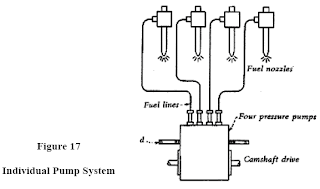Amazing Geothermal Energy Facts
One of the least known of renewable geothermal energy for electricity is created using the heat content of the magma underground. The magma heats the rocks and sometimes travel directly through the sources of water below the surface of the heating up. Extract and run water through tubes around another set of pipes containing a liquid with low boiling point. This causes the liquid becomes a vapor that can be used to run steam turbines. Here are some interesting facts about geothermal energy for its construction.
No fuel is consumed in the process of creating geothermal electricity and is therefore free of emissions.
Multiple types of existing power plants include binary cycle power plants, the hot dry rock geothermal energy, plants, dry steam, flash steam plants, heat source and geothermal heat pump. The most common binary cycle. High ability to generate energy from the source (hot water) is constantly supplied. The heat extracted from the ground is extremely small, but potentially could be used until after millions of years. Power plants do not occupy much space as the main components are pumping groundwater. The fluids used with low boiling points are corrosive and therefore the maintenance and take care when handling. Carbon dioxide and sulfur may be emitted as a byproduct of geothermal electricity due to appear in the water. Philippines Iceland and make maximum use of geothermal energy and create around 25% of its electricity. They are by far the leaders in this area of energy production.
There is much to learn about if you fully understand this issue but I hope this has taught some of the basics and the most interesting things to learn. Some things to look at more would be different types of existing water reservoirs that are tapped, and some specific information on methods for enabling the generation of geothermal electricity.
No fuel is consumed in the process of creating geothermal electricity and is therefore free of emissions.
Multiple types of existing power plants include binary cycle power plants, the hot dry rock geothermal energy, plants, dry steam, flash steam plants, heat source and geothermal heat pump. The most common binary cycle. High ability to generate energy from the source (hot water) is constantly supplied. The heat extracted from the ground is extremely small, but potentially could be used until after millions of years. Power plants do not occupy much space as the main components are pumping groundwater. The fluids used with low boiling points are corrosive and therefore the maintenance and take care when handling. Carbon dioxide and sulfur may be emitted as a byproduct of geothermal electricity due to appear in the water. Philippines Iceland and make maximum use of geothermal energy and create around 25% of its electricity. They are by far the leaders in this area of energy production.
There is much to learn about if you fully understand this issue but I hope this has taught some of the basics and the most interesting things to learn. Some things to look at more would be different types of existing water reservoirs that are tapped, and some specific information on methods for enabling the generation of geothermal electricity.



Comments